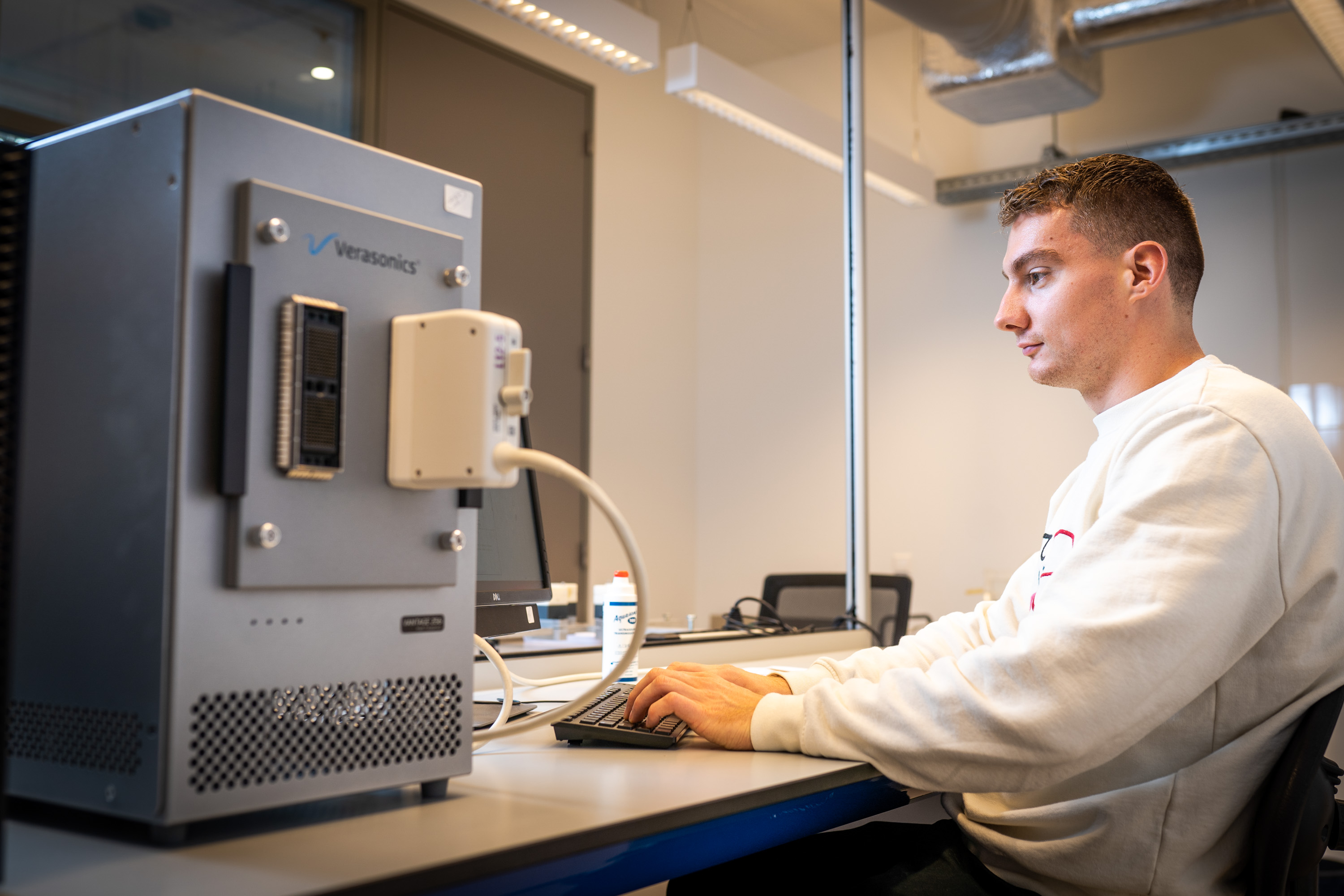Project 3
Ten out of ten for multidisciplinary research into muscular dystrophy
Rick Waasdorp is winnaar van de IMDI Talentprijs 2019-2020. Tijdens zijn afstudeeronderzoek combineerde hij twee verschillende technieken om spiercontracties op zeer snelle tijdschaal in beeld te brengen.
We know that the brain sends a muscle a message before it moves. But we are not entirely sure what happens next. Master’s degree student Rick Waasdorp has come up with a swift, non-invasive technique for looking at exactly this. It is perfect for further research into muscular dystrophy.
Project leader
Administering an electrical charge to a muscle makes muscle fibres contract, which then causes movement by the body. Rick Waasdorp’s friends and house mates can confirm this. The young researcher has used them, and himself, as guinea-pigs many a time. “I wanted to know exactly how a muscle works, so I used an electric stimulator to see what happens when an electrical current activates a muscle”, he explains. “I once hit myself in the face in the process. All of the shocks were completely safe, but when experimenting on other people, I used smaller shocks to avoid accidents.”
The fact that this mechanical engineering student specialising in BioMechanical Design took an LUMC training course in nerve stimulation of the muscles before embarking on his experiments, only serves to illustrate his drive and passion. His high research ambitions are further evidence of this. Waasdorp wanted to combine two advanced biomedical techniques to map the precise progress of muscle contraction: ultrafast ultrasound (UUS) and high-density EMG (HD-EMG).

